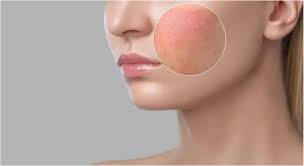You’ve probably heard the term “skin barrier,” but what does it actually mean—and why does it matter so much?
Your skin barrier is your body’s first line of defense. When it’s strong, your skin feels smooth, hydrated, and healthy. When it’s damaged, you may notice redness, irritation, sensitivity, or breakouts.
In this article, you’ll learn what the skin barrier is, how to know if it’s compromised, and most importantly, how to protect and restore it using gentle, effective skincare habits.
What Is the Skin Barrier?
The skin barrier (also known as the stratum corneum) is the outermost layer of your skin. Think of it as a “brick wall”:
- The skin cells are the bricks
- The lipids (fats) between them are the mortar
Its main functions are:
- Locking in moisture
- Blocking out irritants, pollutants, and bacteria
- Preventing water loss
- Maintaining balance and protection
Signs Your Skin Barrier Is Damaged
- Dryness or flakiness
- Increased sensitivity or stinging
- Redness or inflammation
- Tightness, even after moisturizing
- Breakouts or irritation from products that never bothered you before
- Skin that looks dull or feels rough
Common Causes of Barrier Damage
- Over-exfoliating with scrubs or acids
- Using harsh cleansers with sulfates or alcohol
- Too many active ingredients at once (like retinol + AHAs + Vitamin C)
- Cold, dry weather or low humidity
- Overuse of hot water on the face
- Stress and lack of sleep
How to Repair and Protect Your Skin Barrier
✅ 1. Simplify Your Routine
Go back to the basics:
- Gentle cleanser
- Barrier-repair moisturizer
- Fragrance-free sunscreen (SPF 30+)
Avoid exfoliants and treatments for at least one week to give your skin a break.
✅ 2. Choose Products with Barrier-Friendly Ingredients
Look for soothing, hydrating ingredients that support skin repair:
| Ingredient | Benefit |
|---|---|
| Ceramides | Restore and strengthen the barrier |
| Glycerin | Attracts water to the skin |
| Hyaluronic Acid | Hydrates deeply |
| Squalane | Seals in moisture |
| Niacinamide | Calms and balances skin |
| Panthenol (Vitamin B5) | Soothes irritation |
| Oat Extract | Reduces inflammation |
✅ 3. Use Moisturizer Twice Daily (Minimum)
After cleansing, apply a generous layer of moisturizer to damp skin. This helps seal in hydration and reduce water loss.
Tip: At night, you can use a thicker cream or sleeping mask for extra repair.
✅ 4. Avoid Irritants
Temporarily stop using:
- Scrubs
- Retinoids
- Strong acids (AHA/BHA)
- Vitamin C serums
- Fragrance-heavy products
- Clay masks or drying treatments
Once your barrier is healed, you can slowly reintroduce actives—one at a time, every few days.
✅ 5. Protect from Environmental Damage
- Always wear sunscreen (even indoors)
- Avoid over-washing your face—twice daily is enough
- Use a humidifier in dry climates or heated rooms
- Pat dry with a soft towel—don’t rub
Sample Routine to Heal a Damaged Barrier
Morning:
- Gentle cleanser
- Moisturizer with ceramides or glycerin
- Mineral-based sunscreen
Evening:
- Gentle cleanser
- Hydrating toner (optional)
- Rich moisturizer
- Optional: facial oil or sleeping mask
How Long Does It Take to Heal?
Depending on the level of damage, your skin barrier may take a few days to a few weeks to fully recover.
Consistency is key—be patient, gentle, and let your skin do the healing.
Final Thought: Healthy Skin Starts with a Strong Barrier
You don’t need dozens of products for beautiful skin—you need a healthy foundation. By protecting and supporting your skin barrier, you give your skin the strength to stay hydrated, calm, and resilient for the long term.
Strong skin = clear, smooth, and glowing skin.
